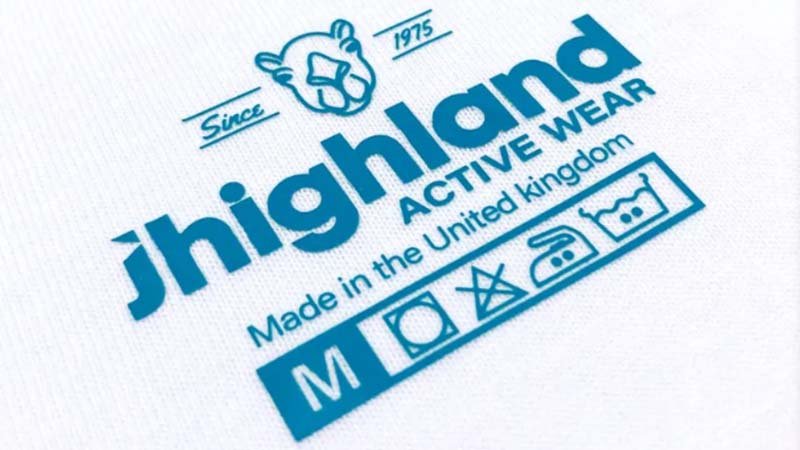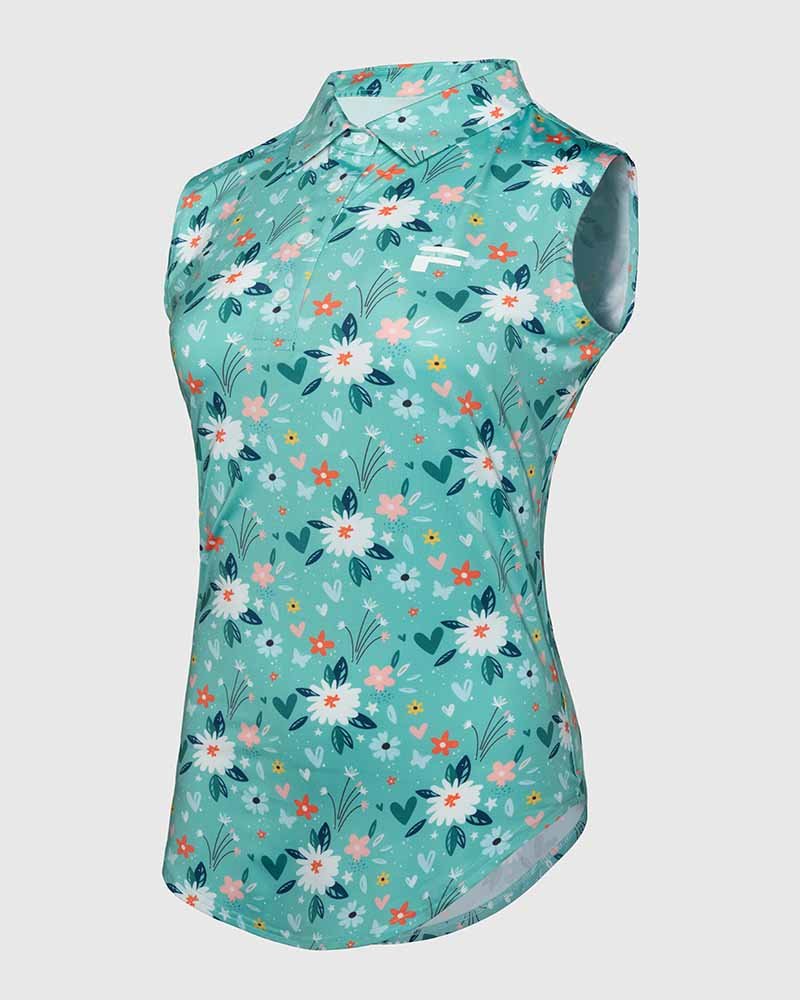Your choice of logo printing can make or break your golf polos. A bad choice leads to cracking logos and unhappy customers. Let me guide you to the right decision.
The five key logo techniques for golf shirts are sublimation, screen printing, embroidery, heat transfer, and DTG. Sublimation is best for vibrant all-over prints on polyester, while embroidery offers a premium, classic feel. For detailed graphics in small batches, DTG is the top choice.

I’ve personally managed production runs using every single one of these methods for brands just like yours. What looks good in a catalog doesn't always perform on the course after 10 washes. Let's walk through my hands-on experience with each technique so you can avoid common pitfalls and choose with confidence.
Is Sublimation Printing the Ultimate Choice for Vibrant All-Over Designs?
You want eye-catching, full-color designs that last. But many printing methods crack or peel, especially on modern performance fabrics. Sublimation offers a permanent, crack-proof solution.
Sublimation printing uses heat to turn ink into a gas, which then bonds directly with polyester fibers. This makes it perfect for complex, vibrant designs that won't fade, crack, or peel, ensuring the fabric’s breathability and feel remain unchanged.

How Sublimation Elevates Performance Polos
Sublimation is a game-changer for modern golf apparel brands. It’s not just about applying a logo; it’s about infusing your design into the shirt itself. Because the ink becomes part of the fabric, it doesn't create an extra layer on top. This is critical for performance polos, as it means the moisture-wicking and breathable properties of the polyester are completely unaffected. You get stunning visuals without sacrificing comfort on a hot day. I always recommend this method to new brands like Bobby's that want to make a bold statement with unique, all-over patterns or photographic images. The design possibilities are virtually limitless.
Key Technical Details:
- Best Fabric: 100% Polyester or high-polyester blends.
- Color Limitation: Only works on white or very light-colored fabric bases.
- Durability: Excellent. The design will outlast the garment itself.
- Feel: Zero texture. The print cannot be felt on the fabric surface.
Here is a quick breakdown to help you decide:
| Feature | Sublimation Printing |
|---|---|
| Best For | All-over prints, complex graphics, gradients. |
| Durability | 50+ washes with no fading. |
| Feel | Completely breathable, no added texture. |
| Cost | Mid-to-high, but cost-effective for multi-color designs. |
| Limitation | Requires light-colored polyester fabric. |
When is Classic Screen Printing Still the Best Option?
You need a cost-effective way to print bold, simple logos for a large order. You worry it might feel stiff or crack over time. When done right, screen printing is durable and economical.
Screen printing pushes ink through a mesh screen onto the fabric, one color at a time. It’s the industry standard for high-volume orders with simple graphics, delivering vibrant colors and excellent durability on a wide range of fabrics, including cotton and poly-blends.

The Economics and Feel of Screen Printing
For decades, screen printing was the backbone of apparel decoration, and it still holds a strong place. Its main advantage is cost-efficiency at scale. The setup is labor-intensive, as a separate screen must be created for each color in your logo. This means high initial costs for small orders, but the price per shirt drops dramatically as your quantity increases. This makes it perfect for tournaments, corporate apparel, or any brand ordering over 100 units of the same design.
A common concern is the feel. Traditional plastisol inks can feel thick and rubbery, potentially cracking over time and reducing breathability. However, modern techniques and water-based inks can produce a much softer feel. I always advise my clients on the right ink choice based on their fabric and brand positioning.
Screen Printing Fact Sheet:
| Factor | Details |
|---|---|
| Cost | Low per-unit cost on large orders (100+). High setup fee. |
| Durability | Good. Typically lasts 30-50 washes before showing wear. |
| Best For | 1-4 solid color logos, large quantities, cotton or blends. |
| Limitations | Not ideal for photographic images or small, multi-color orders. |
| Feel | Can be heavy, but soft-hand additives can improve it. |
For a brand needing a reliable and affordable option for their core logo polos, screen printing remains a top contender, provided the design is simple.
Does Embroidery Always Equal a Premium Golf Shirt?
You want the high-end, textured look of an embroidered logo. But you've seen logos that pucker and warp after just a few washes. The key to quality embroidery is in the details.
Embroidery uses a needle and thread to stitch a design directly into the fabric. It offers a premium, three-dimensional look and feel that signals quality and tradition, making it the classic choice for country club crests and luxury golf brands.

Mastering the Art of High-Quality Embroidery
Embroidery is more than just stitching; it’s a craft. The final quality depends on three things: stitch density, thread type, and backing material. A logo with too few stitches will look sparse and cheap, while too many on a thin fabric will cause puckering. This is where an expert manufacturer makes a difference. We digitize the logo carefully, planning each stitch to ensure it lays flat and looks crisp.
The choice of backing—the material placed inside the shirt to stabilize the fabric during stitching—is crucial. A good cut-away backing will keep the logo stable for the life of the shirt, especially on stretchy performance fabrics. A cheaper tear-away backing might look fine initially but will lead to distortion after washing. For any premium brand, I insist on using high-quality polyester thread and the correct backing to guarantee the logo looks as good on its 50th wear as it did on its first.
Embroidery Essentials:
- Best For: Timeless crests, text-based logos, and adding a premium touch.
- Durability: Excellent. A well-embroidered logo will often outlast the shirt.
- Feel: Creates a raised texture. The backing is felt on the inside of the shirt.
- Cost: Priced by stitch count, making it more expensive for large, complex designs.
- Fabric: Works on most fabrics, but requires proper stabilization for stretch materials.
Is Heat Transfer Printing a Fast Solution or a Quality Trap?
You need a quick, affordable way to create samples or apply a complex logo. But you’re worried the design won't last. Heat transfers can be great, but you must know which type to use.
Heat transfer printing involves applying a design from a carrier paper onto a shirt using a heat press. This method is fast and excellent for multi-color logos in small quantities, but its durability varies widely depending on the type of transfer used.

Navigating the World of Heat Transfers
Heat transfers have a mixed reputation, and for good reason. The most basic type, vinyl transfer (HTV), is thick, not very breathable, and can crack or peel after just a handful of washes. I rarely recommend this for a final product a brand intends to sell. It's simply not up to the quality standards of a serious golf apparel brand.
However, the technology has evolved. Modern transfers, like Direct-to-Film (DTF) transfers, are a massive improvement. DTF prints a design onto a special film, which is then heat-pressed onto the shirt. The result is much more flexible, durable, and breathable than old-school vinyl. It can handle complex, full-color designs and adheres well to various fabrics, including polyester and cotton blends. It’s an excellent middle ground between DTG's detail and screen printing's versatility. I use DTF for clients who need detailed logos on performance fabrics but aren't ordering in quantities large enough for screen printing.
Heat Transfer Comparison:
| Transfer Type | Best Use Case | Durability | Feel |
|---|---|---|---|
| Vinyl (HTV) | Prototypes, one-off events | Low (10-15 washes) | Thick, non-breathable |
| DTF Transfers | Small-to-mid size orders, detailed logos | Good (30-40 washes) | Soft, flexible, breathable |
Is Direct-to-Garment (DTG) Best for Photorealistic Logos?
You have a complex, colorful logo with gradients and fine details. You need a printing method that can capture it perfectly. DTG printing is your answer, but it comes with specific requirements.
Direct-to-Garment (DTG) printing uses a specialized inkjet printer to apply ink directly onto the fabric. It excels at reproducing photorealistic images and intricate designs with unlimited colors, making it ideal for small batches or one-of-a-kind pieces.
The Trade-offs of DTG for a Golf Brand
DTG technology is incredible for creativity. It allows a brand like Bobby's to test a new, complex design without the high setup costs of screen printing. You can print a single shirt with a full-color photograph on it, and the detail will be stunning. The ink soaks into the cotton fibers, resulting in a very soft feel with excellent breathability.
However, there are important limitations to consider. DTG works best on 100% cotton garments. While it's possible to print on polyester blends, the colors often appear less vibrant and the durability can be compromised. Furthermore, printing on dark-colored shirts requires a white underbase to be printed first, which increases the cost and slightly changes the feel of the print. The cost per unit is also higher than screen printing, with no significant price breaks for bulk orders. I recommend DTG for limited-edition drops, high-detail graphic tees, or for producing final samples before committing to a larger production run.
| Factor | Direct-to-Garment (DTG) Details |
|---|---|
| Best For | Photorealistic images, low-quantity orders, complex color schemes. |
| Fabric | Ideal for 100% cotton; less effective on polyester. |
| Durability | Good on cotton (25-40 washes), but can fade faster than screen printing. |
| Cost | High per-unit cost, no bulk discount. |
| Key Pro | Unmatched detail and color blending. |
Conclusion
Choosing the right logo method is vital. Use sublimation for vivid performance polos, screen printing for bulk orders, embroidery for a premium feel, and DTF or DTG for detailed, small-batch designs.



















